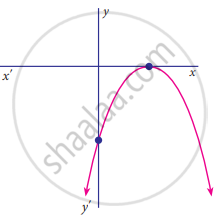Advertisements
Advertisements
प्रश्न
Find p(0), p(1), p(–2) for the following polynomial:
p(y) = (y + 2)(y – 2)
उत्तर
Consider the polynomial:
p(y) = (y + 2)(y – 2)
The value of given polynomial at y = 0 is
p(0) = (0 + 2)(0 – 2)
= 2 × –2
= – 4
When y = 1
p(1) = (1 + 2)(1 – 2)
= 3 × –1
= 3
When y = –2
p(1) = (–2 + 2)(–2 – 2)
= 0 × (–2 – 2)
= 0
APPEARS IN
संबंधित प्रश्न
Find p(0), p(1) and p(2) for the following polynomial:-
p(x) = x3
Verify whether the following zeroes of the polynomial, indicated against them.
p(x) = 3x2 – 1, x = `-1/sqrt3,2/sqrt3`
Verify whether the following zeroes of the polynomial, indicated against them.
p(x) = 2x + 1, `x = 1/2`
Find the zero of the polynomial in the following case:
p(x) = x + 5
Verify whether the indicated numbers is zeroes of the polynomials corresponding to them in the following case:
`f(x)=x^2- 1,x=1,-1`
Verify whether the indicated numbers is zeroes of the polynomials corresponding to them in the following case:
`f (x) = 2x +1, x = 1/2`
Find the value of the polynomial 5x – 4x2 + 3 at x = –1.
Verify whether the following are zeros of the polynomial, indicated against them, or not
p(x) = (x + 3) (x – 4), x = −3, x = 4
Find the number of zeros of the following polynomial represented by their graph

If a, b, c are all non-zero and a + b + c = 0, prove that `a^2/(bc) + b^2/(ca) + c^2/(ab) = 3`.
